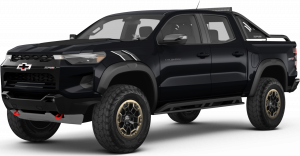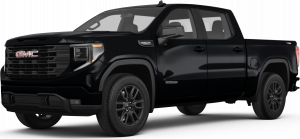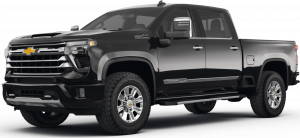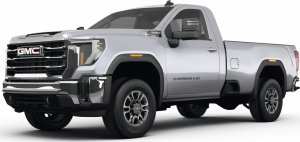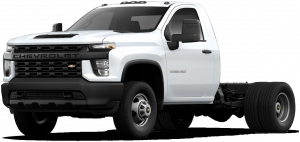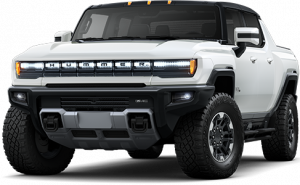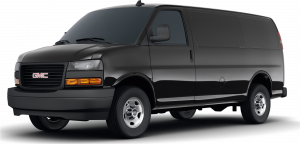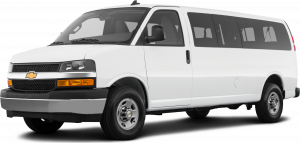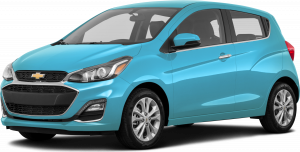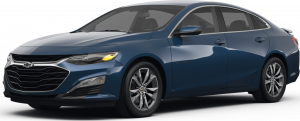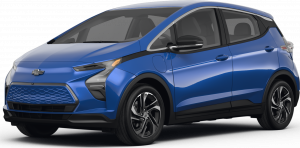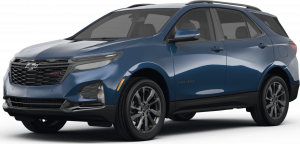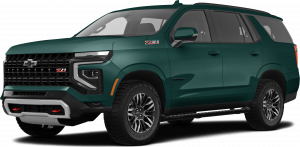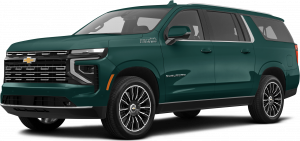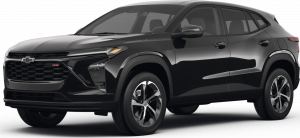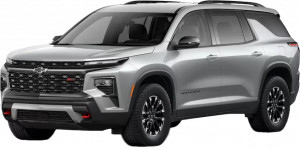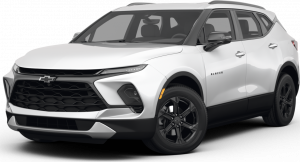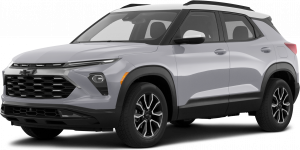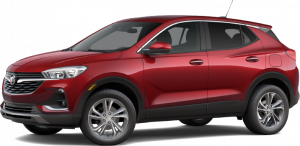FAQ
FAQ
Frequently Asked Questions
Do you Offer Financing?
Yes, we do offer financing! In fact, financing is the most popular option when customers purchase a vehicle from Birchwood Chevrolet. Financing entails making bi-weekly or monthly payments over a set period of time to pay for the vehicle. Most vehicle buyers prefer this method of payment over paying for the whole cost of the vehicle at once. The payments for financing increases or decreases depending on the price of the vehicle of interest. Additionally, the length of the term can increase or decrease payments when financing. Financing is available on all vehicles at Birchwood Chevrolet, including pre-owned vehicles!
What is Leasing? and is it right for me?
Benefits of Leasing:
- Lease terms are shorter than financing, so you can drive a new vehicle more often!
- You can drive a more luxurious model or get more features for the same price as financing!
- You only pay taxes on your monthly payment!
- You are only paying for the portion of the vehicle you use!
Leasing is one of the many ways to purchase a vehicle, and is a popular option for many customers. Many customers prefer leasing because of the flexibility it gives them while owning a vehicle.
The first key to leasing is to understand what a residual is, and how it affects you. Residual is an agreed upon amount a vehicle is worth at the end of a lease contract. The residual on General Motors vehicles is set by GM and cannot change during a lease contract. The residual value on a vehicle is set between 40-50% of the sale price of a new vehicle. For example the residual on a $40,000 vehicle would be roughly $20,000 at the end of a lease contract. The residual amount can change depending on contract length and kilometers agreed upon.
The next part of a lease contract is term length. Lease contracts through General Motors range from 2-5 years, with the maximum lease being 5 years. In addition to lease length, there is also emphasis on the number of kilometers driven during a lease. Most lease contracts are built with an allowance of either 20,000 or 24,000 kilometers per year, which is above the average number of kilometers driven by Canadians in a year. However, if you drive more than 24,000 kilometers per year you can purchase additional kilometers when negotiating your lease contract.
The monthly or bi-weekly payments in a lease are calculated by taking the selling price of the vehicle minus the agreed upon residual. In our example from before, the selling price was $40,000 and the residual was set at $20,000. This would mean that your payments are calculated by taking $40,000 minus $20,000 which equals $20,000. This $20,000 is then paid off during your term length (from 2-5 years) in monthly, or bi-weekly payments. There is also an additional cost of tax on each payment. However, the tax is on your monthly payments, and not the entire cost of vehicle, like it is when financing.
Once in a lease contract you have full use of your vehicle, and can use it as you would any other vehicle. At the end of your lease term you have options. The most common option is to return your vehicle to the dealership at the end of your contract. Once returned you have the freedom to lease, finance, or pay cash for another vehicle. If you want to continue to use the vehicle you have been leasing, and wish to own the vehicle, you can finance the remaining amount of the lease (the residual). The financing of the residual is broken down into monthly or bi-weekly payments over a set number of months.
For more information on leasing and why it might be right for you, book an appointment with one of our sales advisors today at 888-857-5597!
Leasing vs. Financing
Leasing and financing are by far the two most common ways to purchase a vehicle, but which one is right for you? There are many things to consider when deciding whether to lease or finance your next vehicle.
First, it is important to understand the difference between leasing and financing. Please review our articles on leasing and financing if you still have questions, or are uncertain what the two forms of payment entail.
Second, it is important to understand what equity is, and how it affects you. There is equity in every vehicle you own in your life time, whether it is positive or negative equity. Negative equity is when you owe more than what the vehicle is worth. Positive equity is when your vehicle is worth more than what you owe on it. For a more detailed explanation please see our full explanation of equity in FAQs.
The most important question to ask yourself when choosing between leasing or financing, is how long do you plan on owning your next vehicle for? The easiest guideline to follow is the 6 year rule.
If you plan on getting a new vehicle or upgrading vehicles in 5 or less years then leasing is probably the right option for you. When leasing a vehicle, contracts can be built into 2, 3, 4, or 5 year terms, so you can upgrade when you think you'll need to. At the end of a lease contract you have no negative equity in the vehicle, so you can enter a new contract without having to pay additional fees. If you were to try to upgrade to a new vehicle after 2-5 years into a finance contract, you will have large amounts of negative equity. This negative equity would
increase the payments on your new vehicle significantly.
On the other hand, if you plan on owning your vehicle for 6 or more years financing is probably the right option for you. Generally, after 6 years you have paid enough on your contract that you have positive equity in your vehicle. If you try to upgrade vehicles after 6 or more years into a finance contact your positive equity will lower your payments on a new vehicle. Additionally, the maximum length for a lease term is 5 years. If you plan to own the vehicle for more than 5 years financing is the only option for you.
Leasing vs. Buying
Do You Know the Difference Between Leasing and Buying?
When you're in the market for a new car or truck one of the first decisions you face is whether to buy or lease. While buying or leasing each have their own advantages, there are important differences you should consider before going to the showroom.
Buy or Lease?
There isn't a right answer to the question of which is better: buying or leasing. The decision to buy or to lease depends on your individual circumstances now and in the future. It's important to consider your own driving needs and requirements. For example, how many miles will you drive annually? Do you tend to be hard on your vehicles? Do you tend to keep your vehicles until they can't be driven anymore, or are you a "I need a new vehicle every few years" type?The bottom line is that it's important to do your homework and understand the key differences between buying and leasing, so you can apply your knowledge to your personal situation. To help get you started, AWARE reminds you of the major ways buying and leasing differ.
Ownership
One of the biggest differences between leasing and buying is who owns the vehicle. A lease gives you the right to use the vehicle for an agreed upon period of time, often with certain conditions in place (see "Mileage" below, for example). Since you don't own the vehicle, however, you have to return the car or truck at the end of the lease period unless you choose to buy it. Most leases will have a purchase option before or after lease end, but there may be certain conditions for exercising that option. Remember that at the end of the lease term, you may have a new payment to consider: to finance the vehicle if you choose to buy it or to lease or purchase another car or truck.
When you buy a vehicle with cash, you receive immediate ownership of the vehicle. When financing, you build up equity over time and receive full ownership of the vehicle when it is paid in full. Once you have full ownership, you may choose to sell it, trade it or keep it. Up Front Costs - Both leasing and buying have up front costs. For a lease, you may be asked to include the first month's payment, a security deposit, a capitalized cost reduction (like a down payment), taxes, registration and other fees, and other charges. When you buy, typical costs include the cash price or a down payment, taxes, registration fees and other charges.
Do You Know the Difference Between Leasing and Buying?
Monthly lease payments are usually lower than monthly financing payments because you are paying only for the vehicle's depreciation during the lease term, plus rent charges and other fees. If you finance, your monthly payments are usually higher than a monthly lease payment because you are paying for the entire purchase price of the vehicle, including interest, other finance charges and taxes.
Early Termination
If you end your lease early, you are responsible for any early termination charges that exist in your contract. If you finance the vehicle and choose to pay it off early, you will be responsible for the payoff amount. Mileage
It's important to assess your driving needs when considering whether to lease or buy. Most leases limit the number of miles you may drive (often 12,000-15,000 per year). You can negotiate a higher mileage limit and pay a higher monthly payment. You will likely have to pay charges for exceeding the limit if you return the vehicle. When you buy a vehicle, you can drive it for as many miles as you want. But remember, higher mileage will reduce the vehicle's trade-in or resale value.
Wear and Tear
Most leases limit wear to the vehicle. You will likely have to pay extra charges for exceeding those limits if you return the vehicle. There are no limits or charges for excessive wear when you a buy a vehicle. But take note that excessive wear will lower the vehicle's trade-in or resale value.
Equity
Every vehicle you own has some kind of equity in it. It is important to understand which type of equity you have and how it affects you.Equity is calculated by taking the amount your vehicle is worth minus what you owe. There are two types of equity, positive equity, and negative equity, and both affect you differently.
The first is negative equity, and is quite common in the first few years of a finance term. Negative equity is created when you owe more than the vehicle is worth. For example there is an SUV that is worth $20,000, but the owner owes $25,000 on their finance contract. In this example they would have -$5,000 equity in their vehicle. This equity only affects them when they try to upgrade to a new vehicle. When creating a contract on a new vehicle this negative equity has to be added to the new contract. This causes their payments to increase, or their contract to be for a longer term than they previously had.
Inversely, a car owner may have positive equity. Positive equity is seen near the end of finance contracts, or when the customer owns the vehicle outright. It is calculated the same way as negative equity. For example, another customer owns a car worth $10,000 and owes $0 on it. In this case the customer has +$10,000 equity. This amount is now subtracted from the contracted when they get a new vehicle. This decreases the payments on a new vehicle, or shortens the term length.
When looking to get into a new vehicle it is important you know which type of equity you have in your current vehicle and how it will affect your new contract.
Call us today at 888-857-5597 to find out what type of equity you have in your vehicle, and what we can do for you!
Amazon Alexa Can Start Chevrolet Vehicles
General Motors of Canada becomes the first automaker in Canada to enable Amazon Alexa Skills. Drivers of most Chevrolet, Buick, GMC, or Cadillac vehicles built in model year 2011 or newer will be eligible to set up the Amazon Alexa Skill. It lets you ask Alexa to start your car for you to run the AC or help it warm up in the winter.
Procedure:
It's a pretty simple process. If you have an Alexa-enabled device in your home, you're probably already familiar with the process to add a skill. If not, you add the skill using a smartphone app. Then link it to your vehicle using your GM owner centre username. Then set up a pin to protect access. You can use Amazon's Alexa voice service to control some of your vehicle's functions remotely. All you need to get started is an Amazon Alexa device, a select connected vehicle service plan and your Chevrolet Owner Center credentials.
Set-up Instructions:
- Open the Alexa mobile app on your smartphone
- Enable and account link the myChevrolet skill with your Chevrolet Owner Center username and password
- Set a PIN to help protect access to certain features when using the skill
Example Utterances:
"Alexa, ask Chevrolet to start my car."
"Alexa, ask Chevrolet to lock my car."
"Alexa, ask Chevrolet what vehicles are on my account?"
The service is offered at no extra cost to customers who already have remote key fob services activated through their myChevrolet, myBuick, myGMC or myCadillac mobile app.

